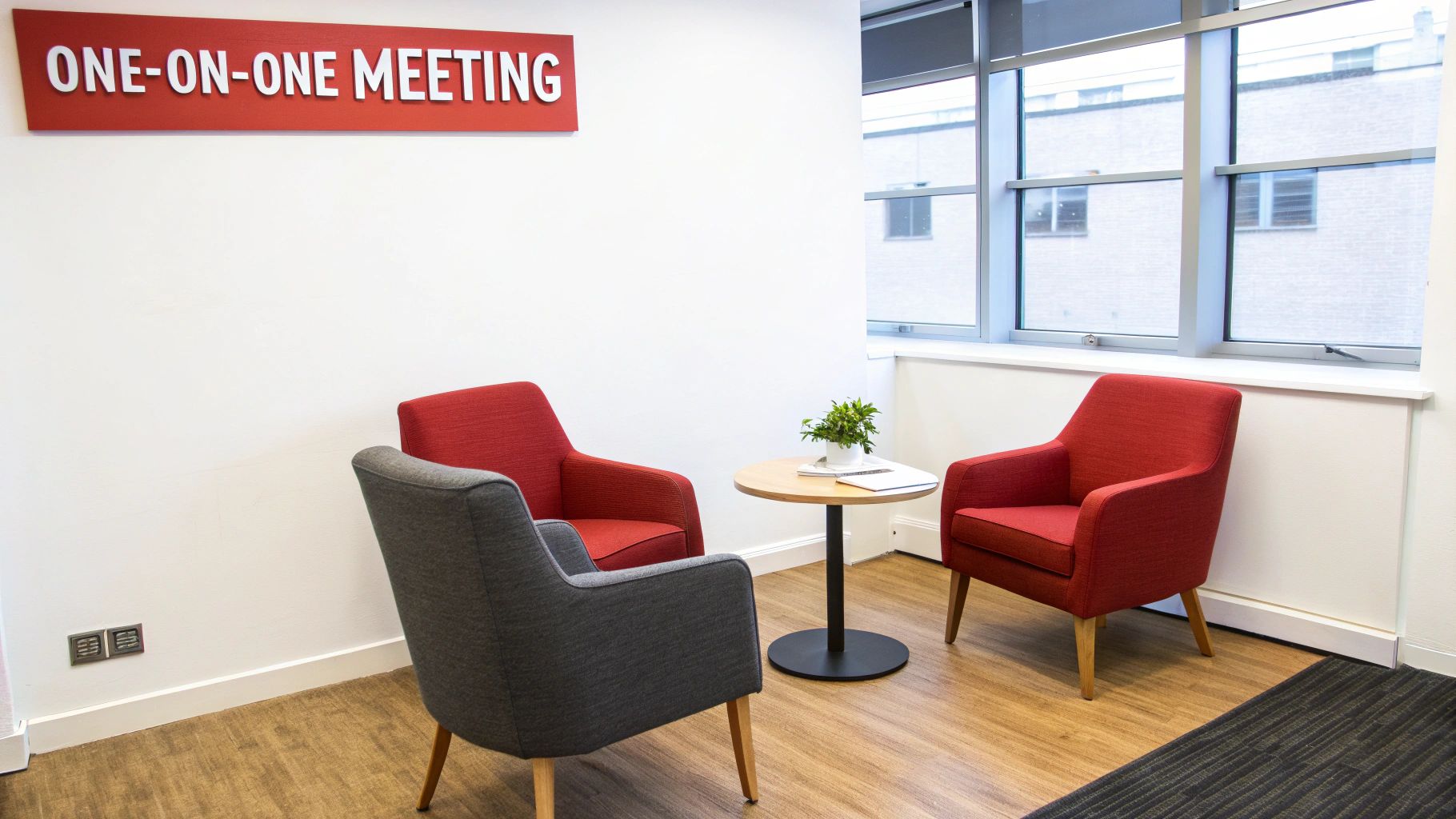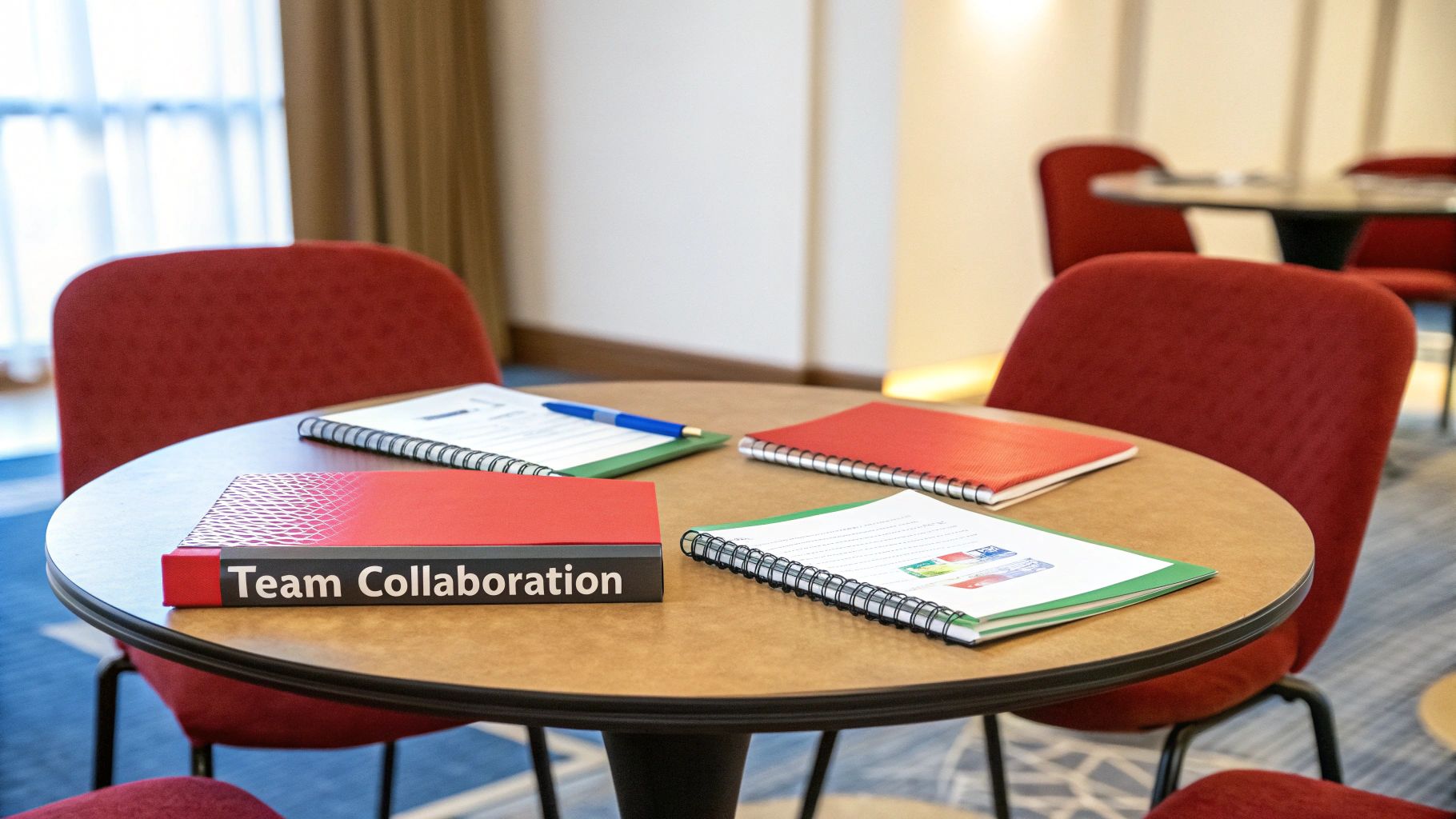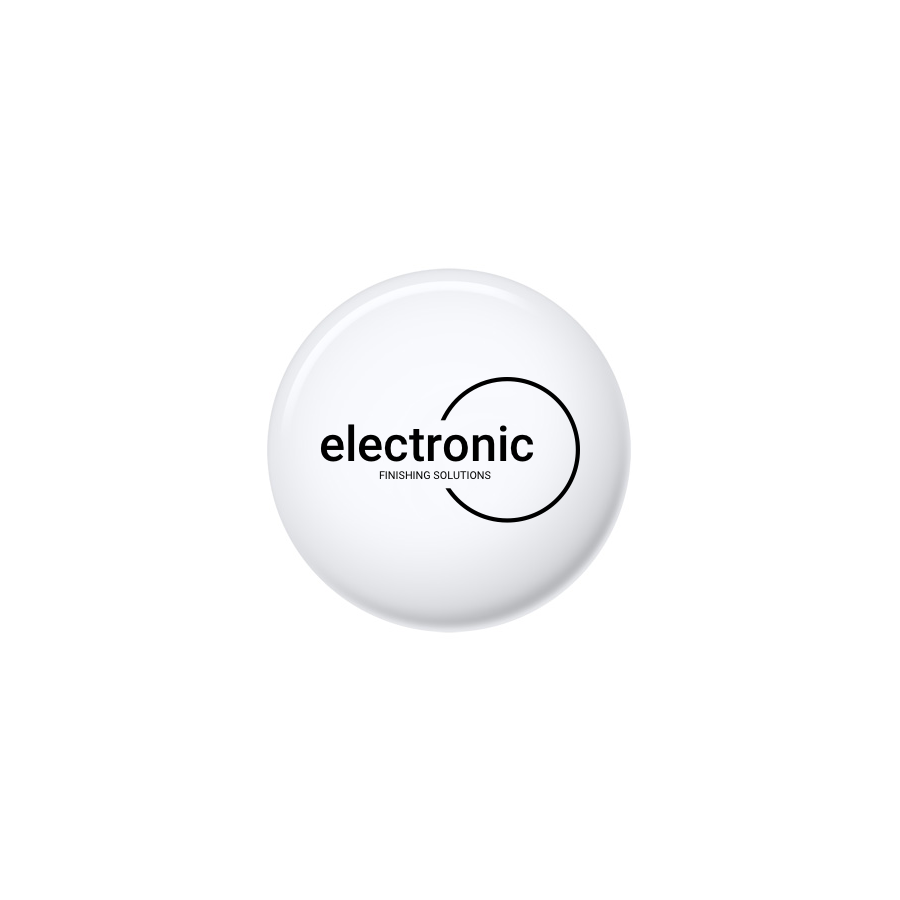In the competitive landscape of 2025, attracting and retaining top talent is more critical than ever. While many companies focus on external branding, the true powerhouse of a successful organization lies within its walls: its people. Employee engagement, the emotional commitment an employee has to the organization and its goals, is no longer a 'nice-to-have' HR metric. It is a fundamental driver of productivity, innovation, and profitability.
Disengaged employees can cost companies billions annually in lost productivity, while highly engaged teams demonstrate significantly greater profitability. But what separates a fleeting perk from a sustainable strategy? The answer lies in implementing proven employee engagement best practices. This is not about adding a ping-pong table to the breakroom; it is about fundamentally reshaping the employee experience through intentional, consistent, and authentic actions.
This guide moves beyond generic advice to provide a detailed roundup of concrete strategies that build a culture of genuine commitment and motivation. We will explore each practice, from fostering transparent communication to enabling employee autonomy, with specific examples, data points, and step-by-step implementation details. Our goal is to equip you with the tools needed to create a workplace where employees do not just work, they thrive.
1. Implement Structured, Regular One-on-One Meetings
One of the most powerful employee engagement best practices is to move beyond sporadic check-ins and establish a formal cadence of one-on-one meetings. These are recurring, protected conversations between a manager and a direct report that focus on the employee’s growth, well-being, and career path, not just their daily to-do list. Championed by influential leaders like former Intel CEO Andy Grove, these meetings are the manager's single most effective tool for building trust and ensuring employees feel supported and heard.

Unlike simple status updates, structured one-on-ones create a dedicated space for meaningful dialogue. They provide a confidential forum for employees to discuss challenges, celebrate wins, and align their personal goals with company objectives. This practice is a cornerstone of high-performance cultures at companies like Google and Shopify, where it is used to foster psychological safety and drive individual development.
How to Implement Structured One-on-Ones
To make these meetings effective, managers must shift from directing to coaching. The goal is to listen more than you talk and guide the conversation with thoughtful questions.
- Establish a Cadence: Schedule these meetings weekly or bi-weekly and treat them as non-negotiable appointments. Consistency signals to the employee that they are a priority.
- Let the Employee Drive: Empower your direct report to set the agenda. This ensures the conversation centers on what is most important to them, fostering a sense of ownership and relevance.
- Focus on Development: While it's fine to touch on current projects, dedicate most of the time to future-focused topics like career aspirations, skill development, and overcoming roadblocks.
- Document and Follow Through: Use a shared document to note key discussion points and action items. This creates accountability for both manager and employee and provides a clear record of progress.
2. Employee Recognition and Rewards Programs
Another critical employee engagement best practice is establishing systematic programs to recognize and reward employees. More than just an annual bonus, this involves creating a culture where appreciation is frequent, specific, and tied directly to the company's values and goals. Leaders like Marc Benioff at Salesforce and the late Tony Hsieh of Zappos built empires on the principle that when employees feel seen and valued for their contributions, their engagement, loyalty, and performance soar.

These programs formalize appreciation, moving it from a random act to a strategic business function. They provide a clear framework for celebrating everything from major milestone achievements to daily behaviors that exemplify company culture. Companies like Microsoft and Southwest Airlines use robust platforms and events to ensure recognition is both visible and meaningful, reinforcing the specific actions that drive success and fostering a positive, motivating work environment.
How to Implement Recognition and Rewards
Effective programs are not one-size-fits-all; they require a thoughtful blend of formal systems and informal gestures. The key is authenticity and consistency.
- Make Recognition Specific and Timely: Vague praise like "good job" is less impactful than "Thank you for staying late to fix that critical bug; your dedication saved the client presentation." Deliver praise as close to the event as possible to reinforce the desired behavior.
- Enable Peer-to-Peer Recognition: Don't limit recognition to a top-down process. Implement tools or channels, like a dedicated Slack channel or software platform, where colleagues can celebrate each other's wins. This builds camaraderie and a stronger sense of team.
- Offer a Mix of Rewards: Combine formal awards (like bonuses or promotions) with informal gestures (like a gift card, extra day off, or public shout-out). For inspiration on what works, explore some of the top employee recognition program examples.
- Train Your Managers: Equip leaders with the skills and budget to recognize their teams effectively. Many managers want to show appreciation but don't know how; training can bridge this crucial gap.
3. Professional Development and Learning Opportunities
A crucial employee engagement best practice is investing in comprehensive professional development and learning opportunities. This goes beyond occasional training sessions; it's about creating an ecosystem where employees are empowered to build new skills, advance their careers, and pursue continuous growth. Visionary leaders like Satya Nadella at Microsoft have championed a "learn-it-all" culture, recognizing that employee development is not just a benefit but a core business strategy for innovation and retention.
When organizations actively support employee growth, they send a clear message: we value you and are invested in your future. This fosters a deep sense of loyalty and engagement. Amazon’s groundbreaking Career Choice program, which pays 95% of tuition for employees to study in-demand fields, is a powerful example. This commitment shows that the company supports an employee's long-term success, even if their career path leads outside the organization.
How to Implement Development and Learning Programs
To create impactful learning programs, the focus must be on aligning individual aspirations with strategic business needs. It’s about building capabilities that help both the employee and the company succeed.
- Align Development with Goals: Work with employees to create personal development plans that connect their career ambitions to the company's objectives. This ensures training is relevant and motivating.
- Offer Diverse Learning Formats: Cater to different learning styles by providing a mix of options. This can include formal workshops, self-paced online courses, mentorship programs, and "stretch" assignments that push employees out of their comfort zones.
- Create Clear Career Pathways: Show employees what their future could look like within the company. Transparent career ladders and internal mobility programs make advancement feel achievable and tangible.
- Empower Manager Support: Train managers to be development coaches. They should actively discuss growth in one-on-ones, advocate for their team members, and help connect them with the right resources.
4. Prioritize Work-Life Balance and Flexibility
A critical employee engagement best practice is to embed genuine work-life balance and flexibility into your company culture, not just pay it lip service. This involves creating policies and an environment where employees can effectively manage professional responsibilities alongside their personal lives. Championed by innovative leaders like Patagonia founder Yvon Chouinard, this approach recognizes that employees are whole people whose well-being outside of work directly impacts their performance and loyalty within it.

This goes beyond simply offering remote work; it's about respecting boundaries and empowering autonomy. When organizations actively support balance through flexible schedules, generous time-off, and a culture that discourages burnout, they demonstrate trust in their team. Companies like Salesforce and Buffer have proven that this model boosts engagement by reducing stress, increasing job satisfaction, and attracting top talent who demand a more human-centric workplace.
How to Implement Work-Life Flexibility
Successfully integrating flexibility requires clear policies, trust, and the right tools. The goal is to manage by output and results, not by hours clocked at a desk.
- Start with a Pilot Program: Before a company-wide rollout, test different flexible arrangements (e.g., compressed workweeks, hybrid schedules) with a specific team. This allows you to gather feedback and refine the policy based on what works for your unique organization.
- Communicate Clear Boundaries: Clearly define expectations for availability, communication channels, and response times. This prevents ambiguity and ensures everyone understands the framework for flexible work.
- Equip Your Team for Success: Provide the necessary technology and resources, such as reliable collaboration software and ergonomic home office setups. Showing appreciation with thoughtful gifts can also make a significant impact; you can learn more about the best remote employee gifts on electronicfinishing.solutions.
- Train Your Managers: Effective management of flexible teams is a distinct skill. Train leaders to focus on outcomes, maintain strong communication, and foster team cohesion regardless of physical location.
5. Foster Transparent and Open Communication
A culture of transparency is another powerful employee engagement best practice, moving beyond top-down memos to a state where information flows freely and openly. This involves creating an environment where leadership is accessible, decision-making processes are clear, and employees feel psychologically safe to share ideas, concerns, and feedback without fear of reprisal. Pioneered by forward-thinking leaders like Buffer’s Joel Gascoigne, this approach dismantles information silos and builds a foundation of trust.
When employees understand the "why" behind decisions and have access to company performance data, they feel more like trusted partners than cogs in a machine. This level of openness is famously practiced at companies like Buffer, which shares its salary formulas and revenue dashboards publicly. Similarly, Google’s legendary "TGIF" meetings, where founders Larry Page and Sergey Brin took unfiltered questions from staff, set a high bar for leadership accessibility and candor, making employees feel respected and involved in the bigger picture.
How to Implement Transparent Communication
True transparency requires a deliberate and consistent effort to share information and invite dialogue. The goal is to make openness the default, not the exception.
- Start with Leadership: Transparency must be modeled from the top. Leaders should regularly share company updates, including both successes and challenges. Salesforce’s V2MOM (Vision, Values, Methods, Obstacles, Measures) framework is a great example of aligning the entire organization around clear, transparent goals.
- Establish Multiple Channels: Use a mix of communication tools for different purposes, such as company-wide town halls for major announcements, team-specific channels for project updates, and anonymous surveys for sensitive feedback.
- Define Clear Boundaries: Determine what information can be shared openly and what must remain confidential for legal or privacy reasons. Clearly communicating these boundaries helps manage expectations and maintain trust.
- Act on Feedback: The most crucial step is to demonstrate that employee input is valued. When you solicit feedback, acknowledge it publicly and show how it is being used to inform decisions. This closes the loop and encourages continued participation.
6. Foster Employee Empowerment and Autonomy
A crucial employee engagement best practice is to move beyond delegation and truly foster empowerment and autonomy. This means giving employees the authority, resources, and freedom to make decisions about their work, solve problems independently, and take ownership of their outcomes. This approach, championed by leaders like Netflix's Reed Hastings, is built on trust, empowering individuals to manage their responsibilities while providing guidance when needed.
When employees have control over their work, their sense of purpose and accountability skyrockets. This practice is famously demonstrated by The Ritz-Carlton, which empowers any employee to spend up to $2,000 per guest to resolve an issue, no questions asked. This level of trust not only leads to exceptional customer service but also creates a highly engaged workforce that feels valued and capable.
How to Implement Empowerment and Autonomy
Successfully fostering autonomy requires setting clear expectations and creating a supportive environment where calculated risks are encouraged. The goal is to guide, not to control.
- Define Decision Boundaries: Clearly outline the scope of an employee’s authority. Let them know which decisions they can make independently and which require collaboration or approval. This clarity prevents confusion and builds confidence.
- Provide Necessary Resources and Training: Equip your team with the skills and tools they need to make sound judgments. This includes access to information, training on decision-making frameworks, and a clear understanding of company goals.
- Create a Safety Net: Encourage a culture where mistakes are treated as learning opportunities, not failures. When employees know they won't be punished for a well-intentioned decision that doesn't pan out, they are more willing to take initiative.
- Celebrate Autonomous Wins: Actively recognize and share stories of employees who successfully used their autonomy to solve a problem or innovate. This reinforces the desired behavior and can be a powerful part of a recognition program. Explore how to build a robust employee recognition program template on electronicfinishing.solutions to formalize this process.
7. Purpose-Driven Work and Mission Alignment
A powerful, yet often overlooked, employee engagement best practice is to deeply connect individual roles to the organization's overarching mission. This goes beyond simply displaying a mission statement on a wall; it involves helping every employee understand the "why" behind their work and see how their daily contributions directly advance a larger, meaningful purpose. When employees feel their work has significance beyond a paycheck, their motivation and commitment skyrocket.
This principle is the driving force behind highly engaged cultures at companies like Patagonia, where employees are united by a mission to "save our home planet." Their passion for environmentalism fuels their work, creating an authentic and powerful bond. Similarly, Tesla's mission to accelerate the world’s transition to sustainable energy attracts and retains talent who want to be part of a transformative movement, making their jobs feel more like a calling.
How to Foster Mission Alignment
To build a purpose-driven culture, leaders must consistently translate the company's vision into tangible, everyday relevance for their teams. The goal is to make the mission a living, breathing part of the employee experience.
- Make the Mission Tangible: Regularly share stories, data, and customer testimonials that illustrate the real-world impact of your company's work. Show employees the results of their collective efforts.
- Connect Individual Roles to the Big Picture: During one-on-ones and team meetings, managers should explicitly link individual tasks and projects to broader company goals. Help employees answer the question, "How does my work matter?"
- Hire for Mission Alignment: Integrate questions about values and purpose into your recruitment process. Hiring people who already resonate with your mission creates a strong foundation for engagement from day one.
- Integrate Purpose into Recognition: When recognizing employees for great work, highlight how their specific actions helped advance the company's mission. This reinforces the connection between performance and purpose.
8. Foster Intentional Team Building and Collaboration
A crucial employee engagement best practice is to move beyond occasional, forced fun and cultivate a culture of genuine collaboration. This involves intentionally designing both formal activities and everyday work processes that strengthen relationships, improve communication, and build collective trust. Leaders like Pixar’s Ed Catmull and Spotify’s Daniel Ek have shown that when teams are deeply connected, they are more resilient, innovative, and engaged.

True collaboration isn't just about placing people in the same room; it's about creating an environment where psychological safety allows for open dialogue and shared problem-solving. This is exemplified by Atlassian’s "Team Playbooks," which provide structured rituals to improve teamwork, and Pixar's physical office layout, designed to encourage spontaneous interactions. Such efforts transform a group of individuals into a cohesive unit working toward a shared purpose.
How to Foster Team Building and Collaboration
The goal is to embed collaborative practices into your team's DNA, making teamwork a natural part of the daily workflow rather than a rare event. Beyond intentional design for team building and collaboration, a comprehensive guide on how to build high-performing teams offers invaluable practical strategies.
- Integrate Collaboration into Work: Instead of relying solely on off-site events, build teamwork into regular processes. Use collaborative project kickoffs, peer feedback sessions, and cross-functional "squads" for specific initiatives.
- Mix Formal and Informal Activities: Balance structured workshops with casual opportunities for connection, like team lunches or virtual coffee breaks. This caters to different personalities and helps build relationships on multiple levels. Check out some new employee welcome gift ideas to start building connections from day one.
- Prioritize Inclusivity: Ensure all team-building activities are accessible and welcoming to every member, regardless of physical ability, personal interests, or cultural background. Avoid activities that might alienate or exclude certain individuals.
- Focus on Building Trust: Design activities that require mutual reliance and open communication. Exercises focused on sharing personal working styles or vulnerabilities can significantly deepen trust and psychological safety within the team.
Employee Engagement Best Practices Comparison
| Item | Implementation Complexity 🔄 | Resource Requirements ⚡ | Expected Outcomes 📊 | Ideal Use Cases 💡 | Key Advantages ⭐ |
|---|---|---|---|---|---|
| Regular One-on-One Meetings | Medium – requires scheduling and training | Moderate – manager time and training | Improved relationships, alignment, retention | Individual development and feedback | Builds trust, early issue detection |
| Employee Recognition and Rewards | Low to Medium – systems & budget needed | Variable – depends on program scope | Higher motivation, morale, retention | Boosting engagement and rewarding behaviors | Reinforces culture, cost-effective |
| Professional Development & Learning | High – training design and coordination | High – investment in programs and mentors | Skill growth, retention, productivity | Career growth and talent development | Builds talent pipeline, improves skills |
| Work-Life Balance and Flexibility | Medium – policy changes and tech support | Moderate – tech and policy investments | Reduced burnout, retention, productivity | Flexible work environments and wellbeing | Enhances satisfaction, reduces stress |
| Transparent and Open Communication | Medium – cultural change needed | Moderate – communication platforms | Trust, inclusion, innovation | Enhancing organization-wide transparency | Builds trust, reduces rumors |
| Employee Empowerment and Autonomy | Medium to High – requires trust and training | Moderate – support systems and training | Increased engagement, innovation, speed | Roles needing decision-making freedom | Encourages autonomy, reduces micromanagement |
| Purpose-Driven Work and Mission Alignment | Low to Medium – communication focus | Low to Moderate – messaging and culture | Increased motivation, retention, alignment | Enhancing engagement through meaningful work | Boosts intrinsic motivation, guides priorities |
| Team Building and Collaboration | Medium – event planning and tools | Moderate to High – activities and tech | Improved communication, trust, problem-solving | Strengthening team cohesion and collaboration | Builds trust, enhances teamwork |
Putting It All Together: Building a Culture of Engagement
Navigating the landscape of employee engagement best practices can feel overwhelming, but it doesn't have to be a monumental overhaul. The journey from a disengaged workforce to a thriving, motivated team is not about a single, grand initiative. Instead, it’s about the consistent, authentic application of fundamental principles. We've explored eight powerful pillars: from the personalized connection of one-on-one meetings to the empowering nature of autonomy, and from the clear path of professional development to the essential need for work-life balance. Each practice serves as a critical thread in the fabric of a positive employee experience.
The key takeaway is that these strategies are interconnected. Transparent communication amplifies the impact of a recognition program. A strong sense of purpose makes team collaboration more meaningful. Flexibility and work-life balance ensure that your top performers have the stamina to pursue growth opportunities. Viewing these practices in isolation misses the point; their true power is unleashed when they work in concert, reinforcing one another to create an environment where employees don't just work, they belong.
Your Actionable Next Steps
True transformation begins with small, deliberate steps. You don’t need a massive budget or a complete restructuring to start making a difference today. Consider these immediate actions:
- Start with Your Managers: Equip them with a simple framework for more effective one-on-one meetings. This is often the most direct and highest-impact change you can make.
- Launch a Simple Recognition System: Create a dedicated Slack channel or a simple email alias for peer-to-peer shoutouts. The act of public appreciation costs nothing but yields significant returns in morale.
- Audit Your Communication: Ask your team a simple question: "What is one thing you wish you knew more about regarding our company's direction or performance?" Use the answers to guide your next all-hands meeting.
These actions build momentum. They demonstrate a genuine commitment to your people, fostering the psychological safety required for genuine engagement. To truly bring these practices together and maximize their impact, it's essential to understand the principles behind fostering a robust culture of engagement.
Ultimately, mastering these employee engagement best practices is about shifting from a transactional relationship with employees to a relational one. It's about recognizing that your people are your most valuable asset and your most sustainable competitive advantage. By investing in their growth, recognizing their contributions, and trusting them to do great work, you build a resilient, innovative, and deeply committed organization. This creates a virtuous cycle where business success and human fulfillment are not competing priorities, but two sides of the same coin. The result is a workforce that is not just present, but passionately invested in collective success.
Ready to streamline your operational processes so you can focus more on your people? Electronic Finishing Solutions provides cutting-edge automation tools that handle tedious finishing tasks, freeing up your team's time for more strategic, engaging, and high-value work. Discover how our systems can enhance productivity and employee satisfaction at Electronic Finishing Solutions.



